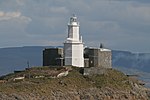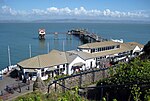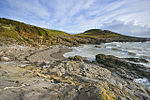The Mumbles Lifeboat Station
Lifeboat stations in WalesSwansea BayTransport infrastructure completed in 1835Use British English from October 2017

The Mumbles Lifeboat Station (based in Mumbles, Swansea, Wales) opened in 1835 with a lifeboat that was funded and managed by Swansea Harbour Trustees and was known as Swansea Lifeboat Station. The station was taken over by the RNLI in 1863 and moved to Mumbles in 1866. The station only officially became The Mumbles Lifeboat Station in 1904. The station currently operates a Tamar-class lifeboat and a D-class (IB1) lifeboat, and operates from a boathouse at the end of Mumbles Pier.
Excerpt from the Wikipedia article The Mumbles Lifeboat Station (License: CC BY-SA 3.0, Authors, Images).The Mumbles Lifeboat Station
Mumbles Road,
Geographical coordinates (GPS) Address Nearby Places Show on map
Geographical coordinates (GPS)
| Latitude | Longitude |
|---|---|
| N 51.5698 ° | E -3.9741 ° |
Address
Mumbles Pier
Mumbles Road
SA3 4EN , Mumbles
Wales, United Kingdom
Open on Google Maps






